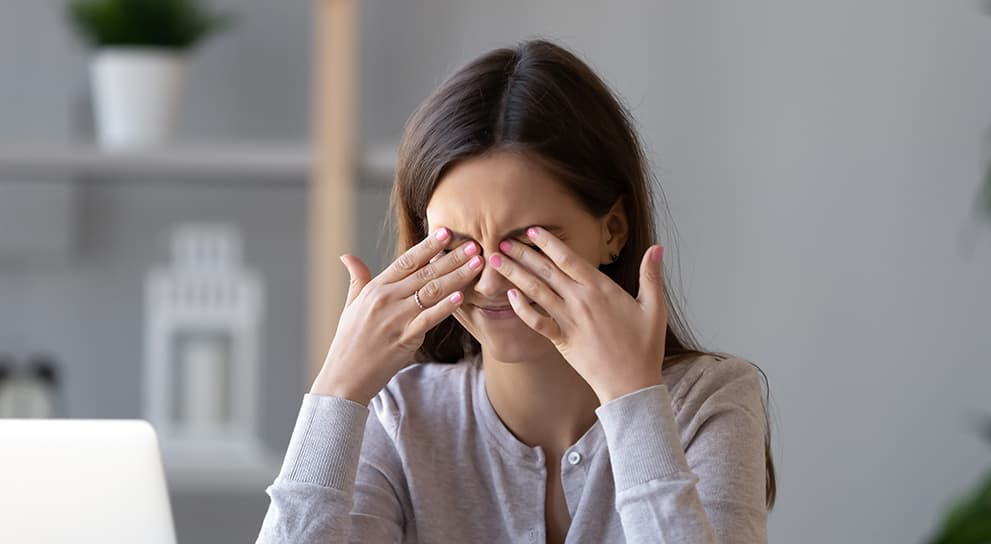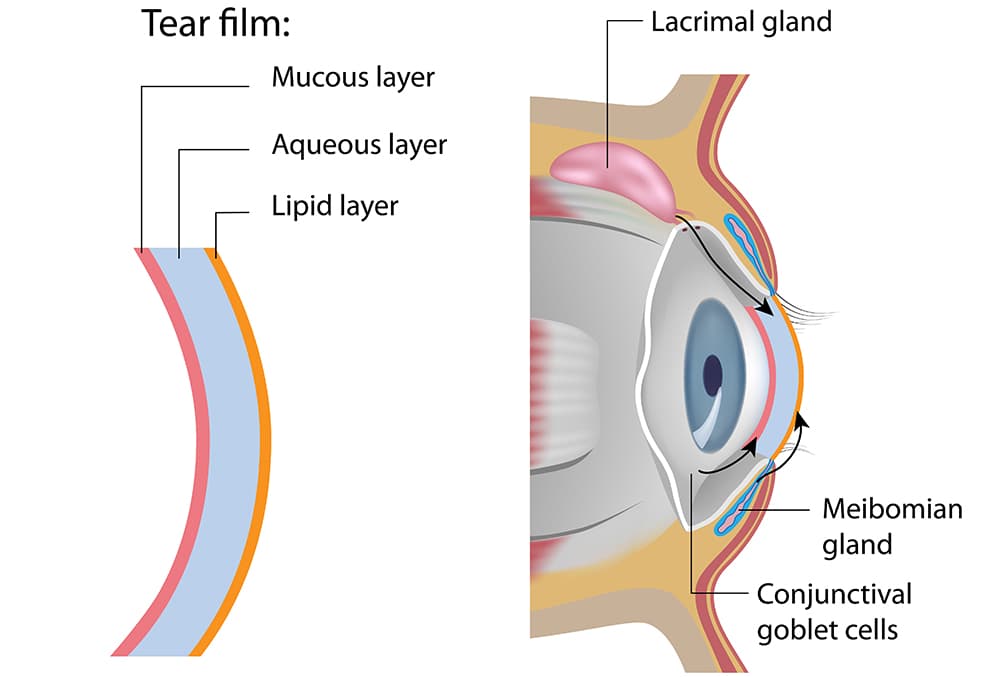Dry eye (also known as Ocular Surface Disease) is a condition referring to an inadequate tear film on the surface of the eye. When the tear film is inadequate (dries), vision immediately becomes blurry.

The human eye is an incredible camera. Like the front surface of a photographic camera lens, the front surface of the eye must be exquisitely smooth for transmitting crisp and clear images. Normally, the surface of the eye is constantly covered with a uniform layer tears that keep the surface of the eye perfectly smooth. That coating of tears is called the tear film. Tears are constantly produced by the eye and replenished by automatic, frequent blinking.
The tear film consists of three layers:
- an inner layer of mucous which allows tears to adhere to the eye surface
- a middle, lubricating layer secreted by the Lacrimal Gland which is located above the outer third of each eye, just below the brow
- an outer oil layer, secreted by the Meibomian Glands on the lid margin, which slows evaporation and stabilizes the tear film
The tear film also serves an important nutrient role for maintaining the health of the cornea. The tear film is an absolutely critical support player in the eye’s visual pathway with a vital function that is often taken for granted.

Causes of Dry Eye may include hormonal changes, auto-immune disease, medications, poor blinking and past ocular injuries. Dry eye is more common with advancing age but can occur at any age and in both sexes. Patients with dry eye or ocular surface disease complain of excess tearing, burning, stinging, redness, irritation, blurred vision, inability to wear contacts comfortably, and general foreign body sensation (having something in the eye).
Excess tearing, known as epiphora, is a common symptom of dry eye. Patients often will assume their eyes are not dry because they water constantly. When the surface of the cornea dries, the eye responds by increasing tear production in an attempt to reestablish adequate lubrication. (Similar to increased tearing that occurs in windy conditions.) Unfortunately, with Dry Eye disease, this reflex tearing does not sufficiently compensate for the inadequate tear film.
Treatments for Dry Eye vary depending on which layers of the tear film are primarily deficient and may be specifically designed for each individual patient. Therapy typically begins with over-the-counter artificial tears, but may also include oral Omega-3 supplements, prescription eye drops to increase tear production, punctal plugs to slow drainage of the natural tears, antibiotics and/or hygiene regimens to treat dysfunction of the oil glands or surgery.
